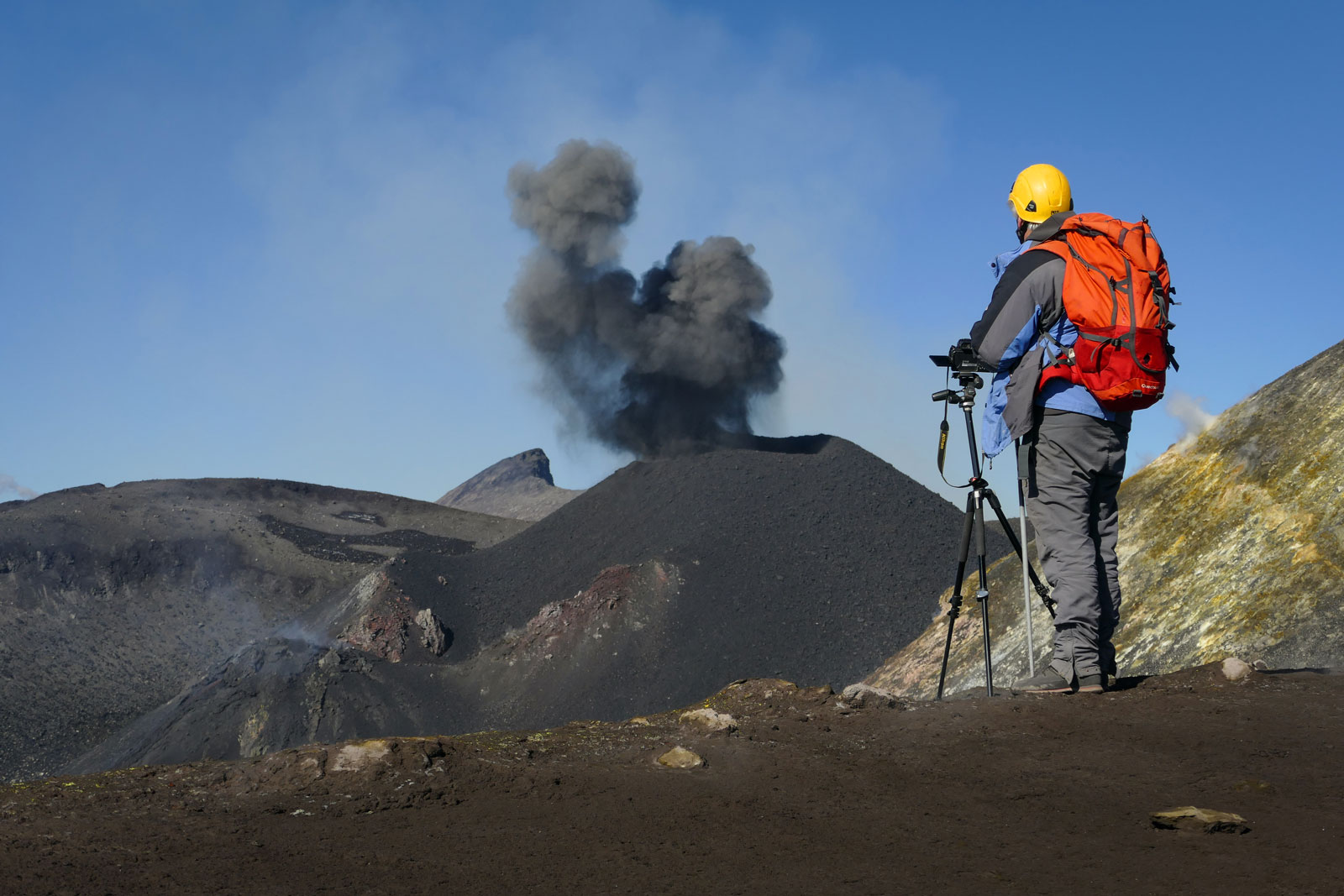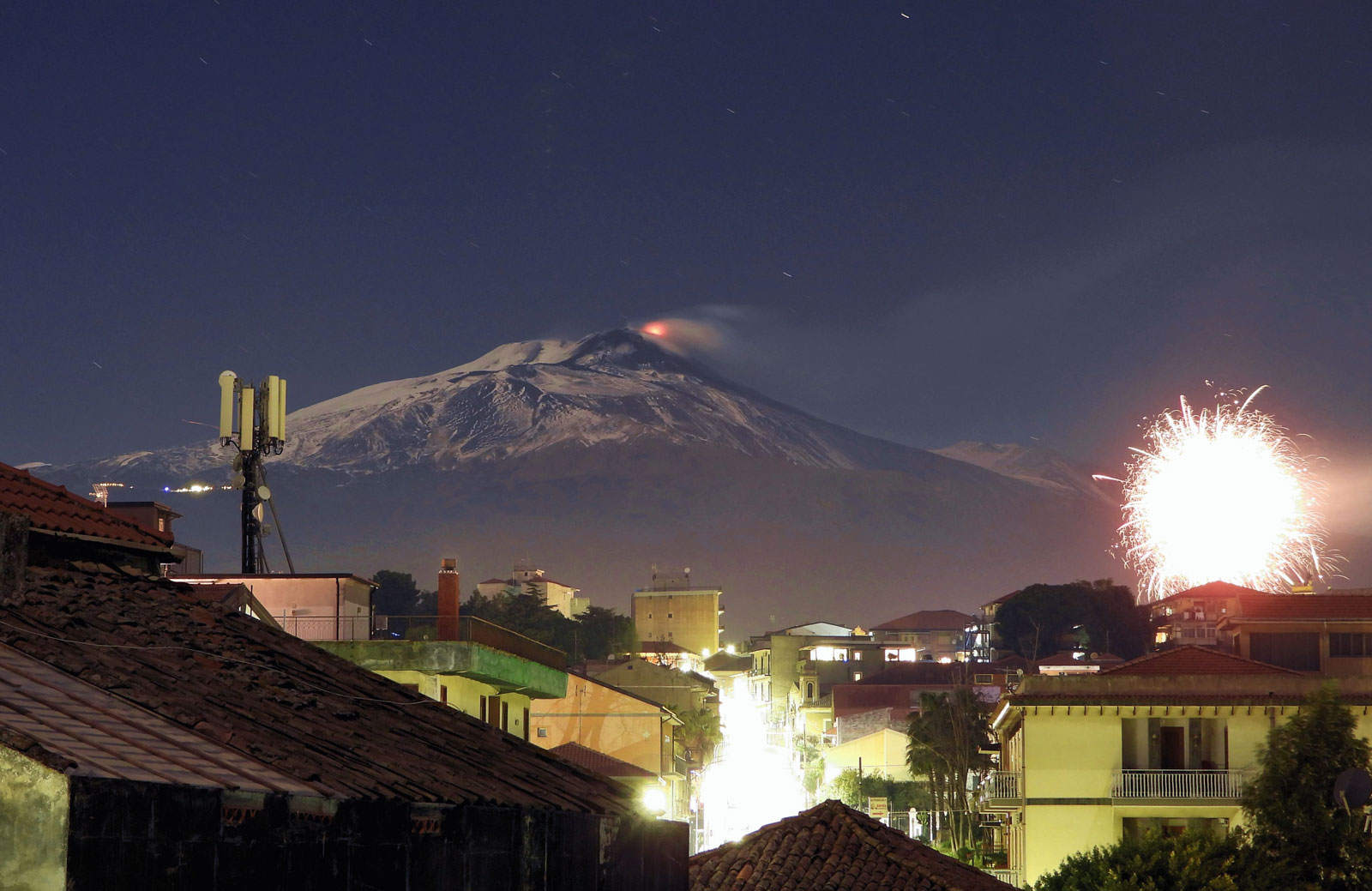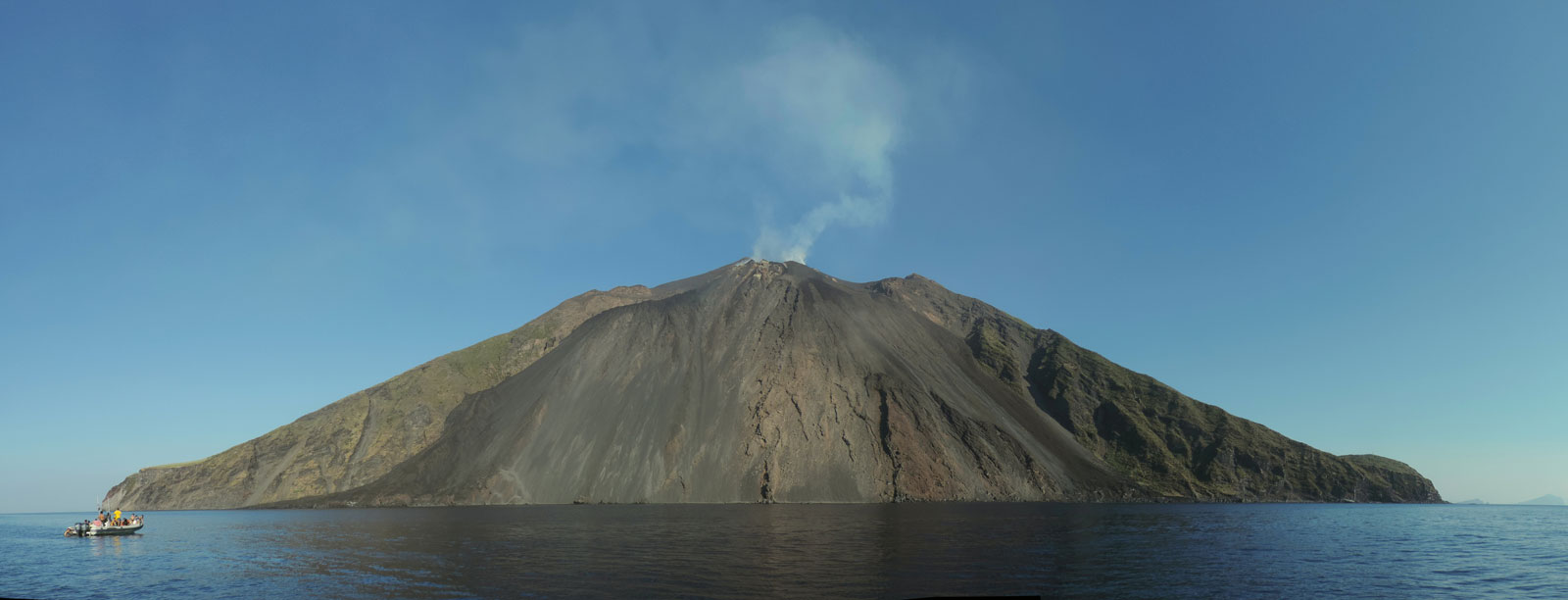Da un punto di vista vulcanologico il periodo che stiamo vivendo in Italia è particolarmente affascinante e impegnativo. L’Etna è in una delle sue fasi più attive, si possono osservare parossismi, fontane di lava e ricadute di cenere anche più volte nello stesso giorno. Ma anche lo Stromboli ha le sue manifestazioni in questo periodo. I due vulcani siciliani sono collegati? Lo abbiamo chiesto a Boris Behncke, vulcanologo dell’INGV che ha risposto a questa e altre domande in un'intervista tutta da leggere.
 Boris, che tipo di vulcano è lo Stromboli?
Boris, che tipo di vulcano è lo Stromboli?
Lo Stromboli è un tipico “stratovulcano” quindi un vulcano costruito da alternanze di colate di lava e depositi di attività esplosiva - piroclastici. I fianchi sono relativamente ripidi e la forma è conica e relativamente simmetrica.
Si tratta di un vulcano tipico di un ambiente geodinamico che chiamiamo “zona di subduzione” la cui attività è caratterizzato da una continua attività detta “stromboliana”: piccole esplosioni ben distinte una dall'altra con lancio di brandelli incandescenti di lava e talvolta esplosioni un po' più forti.
E invece che tipo di vulcano è l’Etna?
L'Etna è un vulcano molto più complesso. La sua forma è estremamente asimmetrica perché è un vulcano che ha avuto una storia dove si sono alternate crescita, collassi e frane.
A differenza dello Stromboli l'Etna ha una vasta gamma di fenomeni eruttivi, anche correlati.
Si va da “tranquille” colate di lava a esplosioni di vario tipo, fino ad arrivare a importanti colate di lava, fontane di lava (parossismi), colonne di cenere e lapilli, flussi piroclastici, e a volte anche piccoli flussi di fango. Molti di questi fenomeni li abbiamo visti quest’anno e in questi giorni: l’attività del vulcano in questo periodo è particolarmente intensa.
 Quali sono le caratteristiche in comune dei due vulcani?
Quali sono le caratteristiche in comune dei due vulcani?
La prima caratteristica in comune è che si tratta di due tra i vulcani più attivi al mondo contraddistinti da una attività continua che se a volte è meno intensa, altre volte lo è maggiormente. La seconda caratteristica è che non solo Stromboli, ma anche l’Etna spesso produce attività stromboliana, così come molti altri vulcani del pianeta. Si tratta di un’attività con modeste esplosioni ad intervalli che possono andare dai pochi secondi a qualche decina di minuti con lancio di brandelli di lava incandescente. Per il resto si tratta di due vulcani diversi.
Quali sono le differenze tra Stromboli ed Etna?
La principale differenza è che l'attività dell'Etna è molto più intensa è voluminosa di quella dello Stromboli. Pensiamo a esplosioni particolarmente forti (parossismi) con ricaduta di materiale nell’Isola e fino al mare: a Stromboli questo tipo di evento è accaduto l’ultima volta nell’estate del 2019 mentre l’Etna ultimamente produce questi eventi quasi ogni giorno. Inoltre questo vulcano ha una varietà di stili eruttivi più ampia.
Le attività dei due vulcani sono correlate? Perchè?
No, le attività non sono correlate. Anche se i due vulcani nascono dallo stesso ambiente geodinamico, ossia alla collisione fra due placche della litosfera, cioè quella africana e quella euroasiatica, ci sono tante differenze. La subduzione presente in Sicilia fa sì che la placca africana si spinge sotto quella euroasiatica: grazie a questo sistema si è formato lo Stromboli L’Etna invece nasce per un fenomeno diverso, si tratta probabilmente di una piccola stiratura della crosta terrestre che permette una decompressione del mantello e quindi la formazione di magma. Anche rispetto al magma ci sono delle notevoli differenze: l’Etna “pesca” il suo magma da 30 km di profondità mente lo Stromboli da 200 km. Questa caratteristica fa sì che sia escluso un collegamento tra i due sistemi.
 Per concludere, come sono rappresentati e sentiti i due vulcani nella cultura popolare siciliana?
Per concludere, come sono rappresentati e sentiti i due vulcani nella cultura popolare siciliana?
Nella cultura popolare i due vulcani sono visti come i membri di una tipica famiglia siciliana. Lo stromboli viene chiamato anche “iddu” (lui) ed è una entità maschile.
L’Etna invece, detto “a muntagna”, è una sorta di grande mamma siciliana, un po' brontolona ma che da anche tante cose buone, per questo va amata e rispettata. La tendenza a personificare i due vulcani rende il discorso molto facile anche quando si tratta di descrivere le loro caratteristiche. Un esempio su tutti: la mamma siciliana che cucina tantissimo ma non vuole mai dire cosa sta preparando. Un po’ come l’Etna: non è facile capire cosa sta per fare.
Stromboli and Etna, let's take stock with the volcanologist
From a volcanological point of view, the period we are living in Italy is particularly fascinating and demanding. Etna is in one of its most active phases, you can observe paroxysms, lava fountains and ash falls even several times in the same day. But Stromboli also has its manifestations in this period. Are the two Sicilian volcanoes connected? We asked Boris Behncke, INGV volcanologist who answered this and other questions in a very interesting interview.
Boris, what kind of volcano is Stromboli?
Stromboli is a typical “stratovolcano”, a volcano built by alternating lava flows and deposits of explosive activity - pyroclastic. The flanks are relatively steep and the shape is conical and relatively symmetrical.
It is a volcano typical of a geodynamic environment that we call "subduction zone" whose activity is characterized by a continuous activity called "Strombolian": small explosions very distinct from each other with the launch of incandescent shreds of lava and sometimes stronger explosions.
And what kind of volcano is Etna?
Etna is a much more complex volcano. Its shape is extremely asymmetrical because it has had a history where growth, collapse and landslides have alternated.
Unlike Stromboli, Etna has a wide range of eruptive phenomena, including related ones.
They range from "quiet" lava flows to explosions of various types, up to important lava flows, lava fountains (paroxysms), columns of ash and lapilli, pyroclastic flows and sometimes even small flows of mud. We have seen many of these phenomena this year and in recent days: the volcano's activity in this period is particularly intense.
What are the characteristics in common of the two volcanoes?
The first feature in common is that they are two of the most active volcanoes in the world characterized by a continuous activity that if at times it is less intense, at other times it is more. The second feature is that not only Stromboli, but also Etna often produces Strombolian activity, as do many other volcanoes on the planet. It is an activity with modest explosions at intervals that can range from a few seconds to a few minutes with the launch of scraps of incandescent lava. For the rest they are two different volcanoes.
What are the differences between Stromboli and Etna?
The main difference is that the activity of Etna is much more intense and voluminous than that of Stromboli. We think of particularly strong explosions (paroxysms) with fallout of material on the island and up to the sea: in Stromboli this type of event happened the last time in the summer of 2019 while Etna lately produces these events almost every day. Furthermore, this volcano has a wider variety of eruptive styles.
Are the activities of the two volcanoes related? Why?
No, the activities are unrelated. Even if the two volcanoes originate from the same geodynamic environment, that is, at the collision between two plates of the lithosphere, the African and the Eurasian one, there are many differences. The subduction present in Sicily causes the African plate to push below the Eurasian one: due to this system, Stromboli was formed. Etna instead was born from a different phenomenon, which is probably a small stretching of the earth's crust that allows decompression of the mantle and therefore the formation of magma. There are also significant differences with respect to magma: Etna "fishes" its magma from 30 km deep while Stromboli from 200 km. This feature ensures that a connection between the two systems is excluded.
To conclude, how are the two volcanoes represented and felt in Sicilian popular culture?
In popular culture the two volcanoes are seen as members of a typical Sicilian family. Stromboli is also called "iddu" (he) and is a male entity.
Etna, on the other hand, known as "a muntagna", is a sort of great Sicilian mother, a little grumpy but who also gives so many good things, which is why she must be loved and respected. The tendency to personify the two volcanoes makes it very easy even when it comes to describing their characteristics. An example above all: the Sicilian mother who cooks a lot but never wants to say what she is preparing. A bit like Etna: it is not easy to understand what she is about to do.



